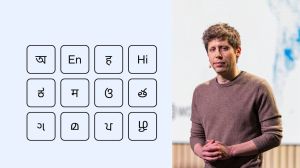Progress? What’s that?
Modi is wooing the tribal belt with his projects but this is one of the most underdeveloped areas in Gujarat.

Haresh Vasava (26), a matriculate tribal in Bharuch, ekes out his living by taking care of five calves, three bullocks and three cows. He also shares a three-acre land with his three brothers. Haresh is no illiterate tribal—he knows he lives in a part of Gujarat different from those whose development figures are being politically claimed and contested in the assembly polls.
Haresh and his extended family live in a run-down factory in Bharuch, an area that falls in the contiguous eastern tribal belt of Gujarat that runs from Dahod to Dangs—the most underdeveloped part of the state.
The contrast could not be more stark than in Bharuch, which has Ankleshwar and Dahej on its western side. Ankleshwar is home to the country’s largest chemical-industrial estate and the most happening SEZ in Gujarat. Jhagadia-Valia, the predominantly tribal area in eastern Bharuch, has a rundown industrial estate and rain-fed agriculture to flaunt. Still, Chhotu Vasava—the sitting JD(U) MLA—sits pretty. Here, neither the Congress nor the BJP have been able to dent Vasava’s Robinhood image for more than a decade.
In Valia, Haresh and his family have never heard of the Van Bandhu Kalyan Yojana, the tribal development programme floated recently by Gujarat Chief Minister Narendra Modi, or even the Forest Rights Act, 2006, though they live right on Valia Road, barely 3 km from the Jhaghadia industrial estate in Bharuch.
At a public meet in Mangrol in Surat district, Modi addressed a tribal crowd, claiming that he did in five years what 13 chief ministers of Gujarat could not in 45 years for the development of tribals.
But in Valia, Haresh’s cousin Ranjit said, “I had to drop out of school. More than the fees, we could not afford the monthly computer fee of Rs 250. I think I will become a labourer.”



- 01
- 02
- 03
- 04
- 05




























